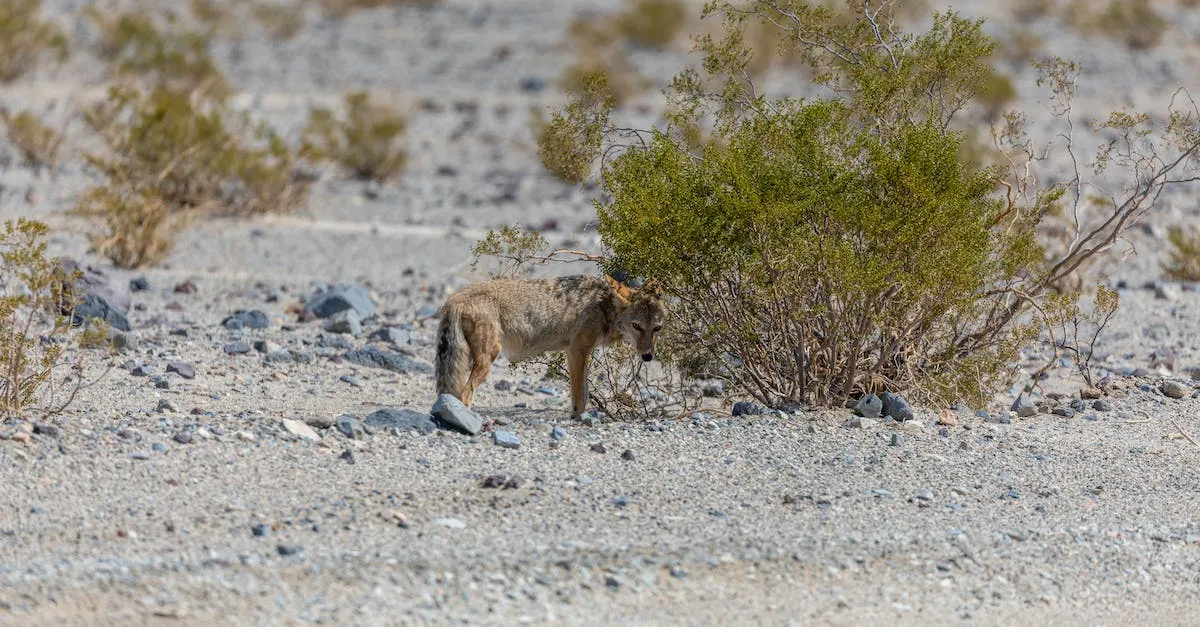Are Coyotes Protected In California?
Coyotes are a common sight across California, often venturing into urban and suburban areas. But what protections do these iconic predators have in the state? The quick answer is that while coyotes themselves are not protected, there are laws restricting how they can be hunted or managed.
In this comprehensive guide, we’ll explore coyote protection laws in California, including hunting regulations, population control methods, and what to do about problem coyotes. We’ll also discuss why coyotes remain relatively unprotected compared to other wildlife.
Hunting and Trapping Regulations
When it comes to coyotes in California, there are specific regulations in place regarding hunting and trapping. These regulations aim to ensure the responsible management of coyote populations while also protecting other wildlife species.
No Closed Season
In California, there is no closed season for hunting or trapping coyotes. This means that individuals can legally hunt or trap coyotes throughout the year. However, it’s important to note that certain restrictions and limitations still apply.
Required Hunting License
To hunt coyotes in California, individuals must possess a valid hunting license. This license can be obtained from the California Department of Fish and Wildlife. It is essential to comply with all licensing requirements to avoid any legal consequences.
Limitations on Methods/Devices
While hunting coyotes is allowed, there are limitations on the methods and devices that can be used. The use of certain traps and snares is prohibited. It is important to familiarize yourself with the specific regulations to ensure compliance and humane treatment of coyotes.
Management by Government Agencies
Coyote populations are managed by government agencies in California. These agencies, such as the California Department of Fish and Wildlife, work to monitor and regulate coyote populations to maintain a balance between wildlife conservation and human interests.
For more information on hunting and trapping regulations in California, you can visit the official website of the California Department of Fish and Wildlife at www.wildlife.ca.gov. They provide detailed information on licensing requirements, permitted methods, and other important guidelines.
Population Control Methods
When it comes to managing the coyote population in California, there are several methods that are commonly used. These methods aim to strike a balance between protecting the ecosystem and wildlife while also addressing any potential conflicts with humans.
Some of the most effective population control methods include hazing and deterrents, exclusion fencing, and regulated trapping and removal.
Hazing and Deterrents
Hazing and deterrents are non-lethal methods that are often employed to discourage coyotes from frequenting certain areas or approaching human settlements. This can include techniques such as loud noises, bright lights, and the use of motion-activated sprinklers.
By creating an environment that is uncomfortable or intimidating for coyotes, they are more likely to avoid these areas and seek out more suitable habitats. These methods are not only effective in reducing human-coyote conflicts, but they also encourage coyotes to exhibit their natural behaviors and maintain a healthy fear of humans.
Exclusion Fencing
Exclusion fencing is another effective method used to control the coyote population. This involves the installation of fences that are specifically designed to keep coyotes out of certain areas. These fences can be constructed using materials such as chain-link, woven wire, or electric wire, and can be as low as three feet or as high as eight feet, depending on the specific circumstances.
Exclusion fencing is particularly useful for protecting livestock, poultry, and other domestic animals from coyote predation. It creates a physical barrier that prevents coyotes from accessing these vulnerable animals, reducing the likelihood of attacks and losses.
Regulated Trapping and Removal
In cases where hazing, deterrents, and exclusion fencing are not sufficient to manage the coyote population, regulated trapping and removal may be necessary. This method involves the use of traps designed specifically for capturing coyotes while minimizing harm to other wildlife or non-target animals.
Traps are strategically placed in areas where coyotes are known to be active, and once captured, they are typically relocated to more suitable habitats or euthanized if necessary. It is important to note that regulated trapping and removal is strictly monitored and regulated by wildlife management authorities to ensure that it is done in a humane and responsible manner.
Dealing with Nuisance or Aggressive Coyotes
Living in California, encountering coyotes is not uncommon. While these animals are an important part of the local ecosystem, they can sometimes become a nuisance or pose a threat to humans and pets. In such cases, it is important to know how to effectively deal with them.
Working with Wildlife Officials
If you are experiencing issues with nuisance or aggressive coyotes, it is recommended to reach out to local wildlife officials for guidance and assistance. These professionals have the knowledge and experience to handle such situations safely and effectively.
They can provide advice on how to deter coyotes from your property and may even offer trapping and relocation services if necessary. Remember, it is essential to never attempt to handle or trap a coyote on your own, as it can be dangerous and may lead to unintended consequences.
Altering Human Behavior
Preventing conflicts with coyotes often involves making changes in human behavior. One of the most important steps is to remove any potential attractants from your property. This includes securing garbage cans, removing fallen fruits, and keeping pet food indoors.
By eliminating these food sources, you can discourage coyotes from frequenting your area. Additionally, it is advisable to supervise small pets when they are outside, especially during dawn and dusk when coyotes are most active.
Furthermore, if you frequently encounter coyotes in your neighborhood, it is crucial to spread awareness among your community. Educate your neighbors about the importance of not feeding coyotes and the potential consequences it can have.
Encourage them to follow the necessary precautions to avoid attracting these animals.
Removal as Last Resort
In situations where coyotes pose a significant threat to human safety or have become overly aggressive, removal may be considered as a last resort. However, it is important to note that coyotes are protected under California state law, and their removal should only be carried out by authorized personnel.
These removals are typically done by licensed trappers or wildlife officials who follow strict guidelines to ensure the safety and welfare of both humans and animals.
It is worth mentioning that removing individual coyotes may not solve the problem entirely, as others may quickly fill the vacant territory. Therefore, it is crucial to address the root causes of the issue, such as removing attractants and altering human behavior, to achieve long-term solutions.
For more information and guidance on dealing with coyotes in California, you can visit the official website of the California Department of Fish and Wildlife at https://www.wildlife.ca.gov/.
Why Coyotes Lack Protections
Despite their prevalence in the California landscape, coyotes lack specific legal protections in the state. Several factors contribute to this lack of protection, including their abundant population, the perception that they are not endangered, and concerns about their impact on livestock and game.
Abundant Population
Coyotes are highly adaptable creatures and have thrived in various habitats across California. Their population has steadily increased over the years, making them one of the most common predators in the state.
With an estimated population of over 1 million, coyotes have become a fixture in both urban and rural areas.
This abundance, coupled with their ability to reproduce rapidly, has led some to believe that coyotes do not require legal protections. However, it is important to note that despite their numbers, coyotes still face challenges and threats in their environment.
Lack of Endangerment
One of the reasons why coyotes are not afforded specific protections is the perception that they are not endangered. Unlike species that are critically endangered or on the brink of extinction, coyotes are considered a species of least concern by organizations like the International Union for Conservation of Nature (IUCN).
This categorization implies that the overall population of coyotes is stable, and they are not at immediate risk of extinction. However, it is crucial to recognize that local populations of coyotes can face localized threats and may require management strategies to prevent conflicts with humans.
Perceived Threat to Livestock/Game
Another reason why coyotes lack protections is the concern that they pose a threat to livestock and game species. Coyotes are opportunistic predators that will prey on small animals, including rodents, rabbits, and even birds.
They can also target livestock, such as sheep and chickens, leading to economic losses for farmers and ranchers.
This perceived threat has led to a focus on managing coyotes through methods such as hunting and trapping. While these methods can help reduce conflicts, it is important to balance the needs of both wildlife conservation and the protection of domestic animals.
It is worth noting that despite the lack of specific protections, there are regulations in place regarding the hunting and trapping of coyotes in California. These regulations aim to strike a balance between managing coyote populations and ensuring the sustainability of wildlife populations.
Conclusion
In summary, coyotes have limited protections in California compared to other wildlife species. While regulated hunting and population control methods are allowed, indiscriminate killing is prohibited. Coexisting with coyotes through education and deterrents is generally recommended over removal. Understanding the nuances around coyote management can help communities address conflicts.








